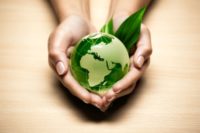In 1735, Benjamin Franklin wroteExternal that “an ounce of prevention is worth a pound of cure.” We might think he was referring to health and medicine—not so. Mr. Franklin was recommending a metal enclosure to prevent bits of hot coals from starting a building fire. He also recommended training and equipping firefighters. One solution involved technology, and the other involved the organization of work; yet both were systems designed to prevent harm.
The concept of designing-out hazards is not new. It remains the most effective way to prevent harm. Unfortunately, history shows us that it is a concept used all too little.
In the early 1990s, health and safety practitioners, including professional engineer Fred Manuele, noticed that designing-out hazards was seldom mentioned in safety and health literature or management standards. Mr. Manuele studied over 1,600 accident reports and noticed that over a third of them mentioned design issues as a causal factor, yet the recommended corrective actions did not relate to the identified design issues. In 1994, the American Society of Safety Engineers (ASSE, now American Society of Safety Professionals, ASSP) published a Designing for Safety position paper calling for an effective process to be developed. In 1995, the National Safety Council authorized a ten-year charter for an “Institute for Safety through Design,” developing the “Safety through Design” textbook.
In 2007, NIOSH launched a seven-year Prevention through Design (PtD) national initiative with a conference involving over 300 stakeholders from 10 industry sectors—developing the PtD Strategic Plan to guide work in PtD among all interested parties. NIOSH convened a Safe Green Jobs workshop in 2009, where then director of OSHA, Dr. David Michaels, asked the question, “How sustainable is dangerous technology?” Furthering this push to see PtD considered in emerging technologies, NIOSH convened the Safe Nano Design workshopExternal in 2012.
Another major step forward occurred in 2011 when the American National Standards Institute (ANSI) and ASSE published the ANSI/ASSE Z590.3 Prevention through Design standardExternal. This standard validates the importance of PtD and describes how to use a PtD process in any business.
Additional guidance and information endorsing the value of PtD has evolved through NIOSH publishing four PtD educational modules for engineering college curricula and collaborating with academic researchers to incorporate PtD principles into dozens of engineering textbooks. NIOSH also publishes concise, actionable guides for specific PtD solutions known as “Workplace Design Solutions.”
In 2014, NIOSH published a progress report and extended the PtD initiative for five years. In collaboration with NIOSH, the U.S. Green Building Council published a PtD pilot creditExternal in 2015 that can be used toward Leadership in Energy and Environmental Design (LEED) “green building” certifications. Also in 2015, collaboration began with the Purdue Process Safety and Assurance CenterExternal (P2SAC) to advance PtD principles in chemical manufacturing. NIOSH continues to work with stakeholders from industry, organized labor, academia, and other government agencies through technical exchanges and exploration of PtD applications in new and emerging workplace scenarios.
The continued and growing interest in PtD is both encouraging and full of opportunity, especially as the advantages of designing-out hazards become even more apparent with effective workplace design solutions.
There is still much to do to incorporate “PtD thinking” into research, practice, policy, and education. NIOSH has instituted PtD as one of its research programs to ensure continued focus on it. Later this year, we will introduce a “NIOSH Prevention through Design Award” to recognize successful promotion or utilization of PtD.
I extend my thanks to the many dedicated professionals who share responsibility for the advances made to date. We look forward to many continued collaborations and advances together.







